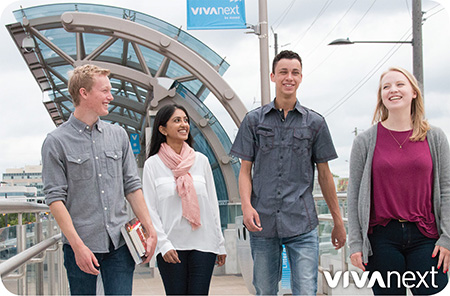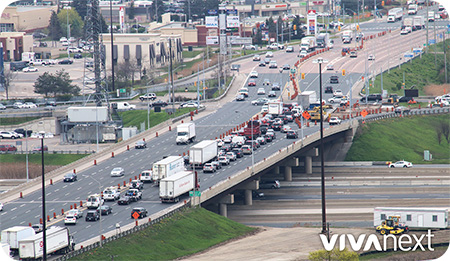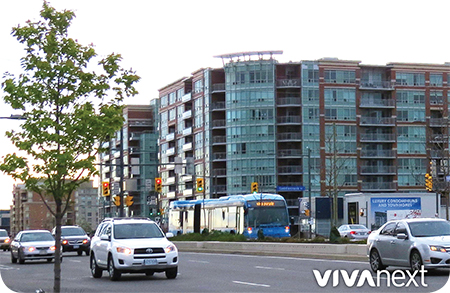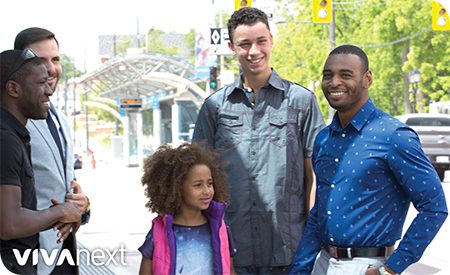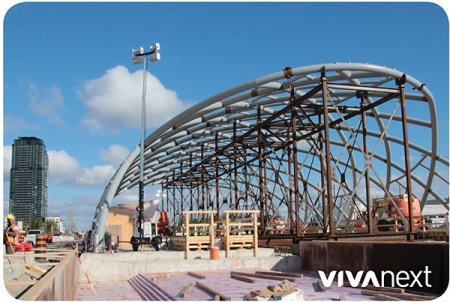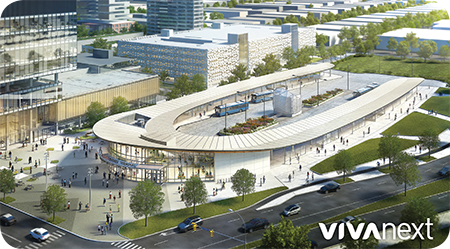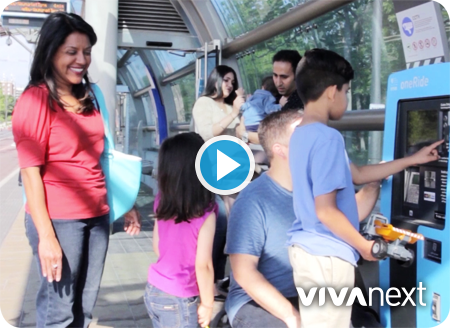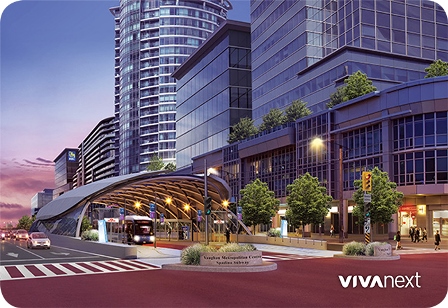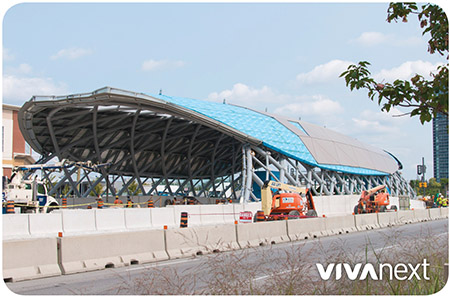
If you’re a Viva customer, you know that vivastations generally follow the same design, with a curved glass canopy providing shelter from the elements, and extending over the concrete platform and enclosed glass waiting area.
easy on the eyes
Elegant curves and expanses of glass, warmed by wood. Open and airy while still welcoming, human-scaled and sheltering — these are the main themes in the vivaNext design language. A vivaNext structure, whether it’s a vivastation, the towers at Bayview Station, or the Operations, Maintenance and Storage Facility [OMSF] in Richmond Hill, contain those recognizable elements and marry functionality with beauty.
We believe that taking public transit should be a great experience. It should be convenient, comfortable and reliable, but also aesthetically pleasing.
the biggest vivastation yet
So in keeping with this overall design goal, we’re excited to report the progress on the new bus rapid transit [BRT] station taking shape on Highway 7 in the Vaughan Metropolitan Centre [VMC] transit hub.
With the vivaNext curves as our visual starting point, we needed to tailor the design of the new station to its unique role: linking Viva passengers arriving via the BRT lanes in the middle of Highway 7 to the subway trains below and to the YRT bus terminal nearby.
connecting connections
Passengers connecting between the new Line 1 TTC subway and Viva literally don’t have to cross the road to get to the subway or the new SmartCentres Place Bus Terminal north of the subway station. Once in the station, stairways and escalators and elevators will make it easy to connect to the subway concourse level below, and to an underground pedestrian path connecting to SmartCentres Place Bus Terminal for YRT. For pedestrians and cyclists in the area, there’s also going to be street level crosswalks and a plaza on the north side of Highway 7 connecting to the subway station and YRT bus terminal.
Over the next several weeks, we’re going to be posting more information and descriptions of the wonderful new VMC BRT station, including its design and an introduction to its amenities. And then before you know it, we’re all going to be able to enjoy fully rapid transit connections between York Region and Toronto. That’s something to really celebrate!

